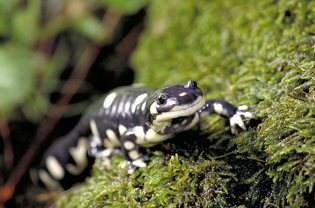
Center claims EPA has failed to protect species from
pesticides
Just weeks after a ruling that requires the California Fish and
Game Commission to review the California tiger salamander for
listing as an endangered species in the state, the Center for
Biological Diversity has threatened another government agency with
a lawsuit.
Center claims EPA has failed to protect species from pesticides
Just weeks after a ruling that requires the California Fish and Game Commission to review the California tiger salamander for listing as an endangered species in the state, the Center for Biological Diversity has threatened another government agency with a lawsuit.
Center staff filed a notice of intent to sue against the U. S. Environmental Protection Agency Jan. 9 for violations of the Endangered Species Act. They allege that 11 Bay Area endangered and threatened species and their habitats have been harmed by pesticides.
“The EPA has failed to comply with even the basic requirements of the Endangered Species Act in registering and approving uses of pesticides known to poison Bay Area endangered species,” said Jeff Miller, the Bay Area wildlands coordinator for the center. “Given the known significant effects on wildlife and the EPA’s own acknowledgements regarding pesticide use exceeding levels of concern for endangered species, pesticide restrictions to protect our most endangered species are long overdue.”
From 1999 to 2005, more than 61 million pounds of pesticide active ingredients were used in the Bay Area, according to data collected by the Center. Staff recorded information from the Fish and Wildlife Service, the EPA, the U. S. Geological Survey and the California Department of Pesticide Regulation. The information was collected and printed as part of the “Poisoning our imperiled wildlife: San Francisco Bay Area endangered species at risk from pesticides,” released in March 2006.
The chemicals have been found in the freshwater and wetland habitats of the California tiger salamander, including areas in San Benito County. Other species’ habitats that have been affected include the Bay checkerspot butterfly that inhabits regions of Coyote Creek and the San Joaquin kit fox.
Through the lawsuit, the Center is hoping for a temporary solution similar to the interim pesticide use restriction they received to protect California red-legged frog territory. The EPA and the pesticide industry signed an agreement in Oct. 2006 that prohibits the use of 66 pesticides around the frog’s habitat for three years.
“Interim pesticide restrictions…would be reasonable and effective protection until formal consultations with the Fish and Wildlife Service are completed for these 11 species,” Miller said.
Some of the pesticides in question include chlordane, chlorpyrifos, DDT, diazinon and dieldrin.
“We have not received any official paperwork from them so it would be premature to respond to what the agency may have as far as an opinion,” Enesta Jones, an EPA spokesperson, said when asked about the potential lawsuit.
Melissa Flores can be reached at mf*****@**********ws.com.









